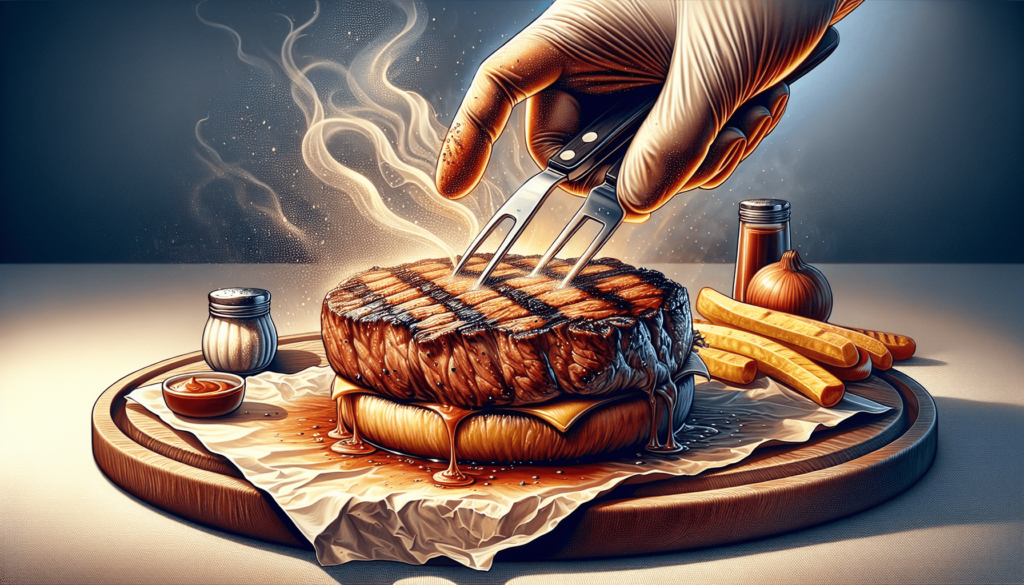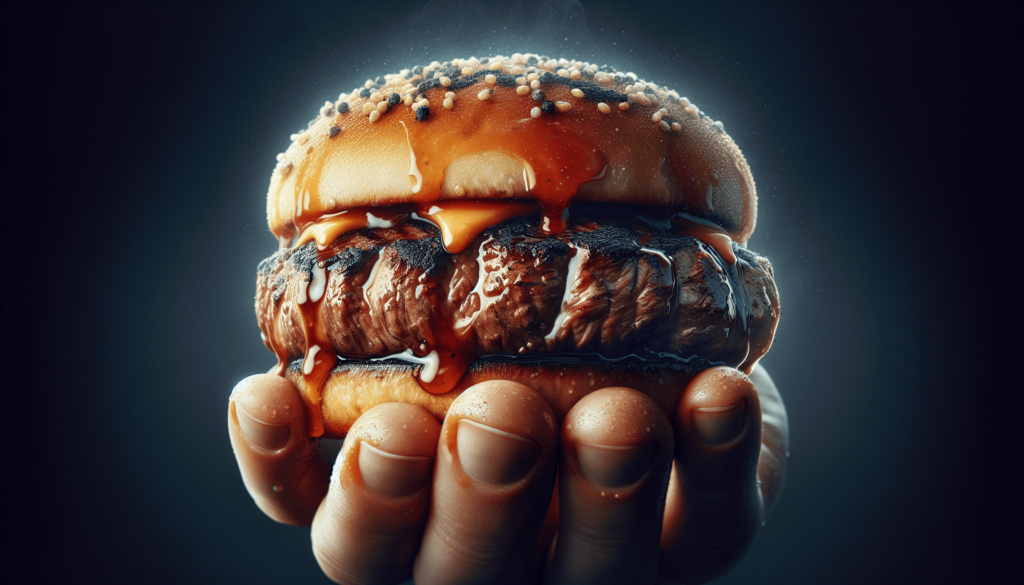So you’ve spent all day marinating and grilling the perfect cut of meat. The sun is shining, the grill is hot, and your taste buds are tingling with anticipation. But before you dive in and savor that juicy, flavorful bite, there’s one crucial step that often gets overlooked: resting your grilled meats. While it may be tempting to dig in right away, giving your meats a few minutes to rest can make all the difference in ensuring a tender and mouthwatering experience. In this article, we will uncover the secrets of properly resting your grilled meats and explain why it’s an essential step that should never be overlooked.

Why Resting Grilled Meats is Important
Resting grilled meats is essential for several reasons. When you cook meat over high heat, the juices in the meat are forced to the center. Resting the meat allows these juices to redistribute throughout the entire piece of meat, resulting in a more tender and flavorful bite. By giving the meat some time to rest, you allow the juices to settle and be reabsorbed, enhancing the tenderness of the meat.
In addition to redistributing the juices, resting grilled meats also prevents dryness. When you cut into a piece of meat immediately after grilling, the juices will escape, leaving your meat dry and less enjoyable. Allowing the meat to rest before slicing it gives the juices time to reabsorb, ensuring a moist and succulent final product.
Furthermore, resting grilled meats can significantly improve the overall flavor. During the grilling process, the intense heat caramelizes the meat’s surface, creating a rich and delicious crust. Resting the meat allows the flavors to develop and settle, resulting in a more harmonious and enjoyable eating experience. So, whether you’re grilling a steak, chicken, pork, fish, burgers, or even vegetables, taking the time to let them rest will undoubtedly elevate the flavor profile of your dish.
Determining Resting Time
The appropriate resting time for your grilled meats can vary depending on the size and thickness of the cuts. As a general rule, 5-15 minutes is recommended for most meats. However, smaller cuts, such as chicken breasts or burgers, may require shorter resting times of about 3-5 minutes.
To determine the ideal resting time for your specific cut of meat, consider its thickness. Thicker cuts, like a hearty steak or a thick pork chop, will benefit from a slightly longer resting period to allow for thorough juice distribution. Use your judgment and aim for a resting time that ensures the meat is properly rested but still warm when served.
Resting Techniques
There are different techniques you can employ to rest your grilled meats effectively. Choose the one that suits your preferences and the nature of the meat you are cooking.
One common method is to tent the meat with foil. After removing the meat from the grill, loosely cover it with a sheet of aluminum foil. This technique helps to trap some of the heat and steam, keeping the meat warm while it rests. It’s important to remember that the foil should be loosely draped over the meat to prevent the moisture from seeping out, preserving the tenderness and juiciness.
Another resting technique involves placing the meat on a cutting board. This method works well for larger cuts, such as steaks or roasts. Simply transfer the meat onto a clean cutting board and allow it to rest. This technique allows any remaining heat to escape from the meat while still keeping it warm. Just make sure to place a plate or foil underneath the cutting board to catch any escaping juices.
Using a resting rack is another effective method, particularly when grilling smaller cuts. A resting rack elevates the meat off the surface, allowing air to circulate around it and preventing it from becoming soggy. This technique works well for chicken wings, ribs, or any other grilled meat that benefits from crispiness.
Regardless of the technique you choose, it is important not to cover the meat too tightly to preserve its crispiness. Proper resting techniques will keep your grilled meats tender, juicy, and full of flavor.
Resting Different Types of Grilled Meats
Resting various types of grilled meats requires slight adjustments to the technique and timing. Here are some guidelines for resting specific meats:
Resting Steak
After grilling your steak to perfection, it’s crucial to let it rest for 5-10 minutes before slicing into it. Tent the cooked steak with foil to keep it warm during the resting period. This technique allows the juices to redistribute evenly, leading to optimal tenderness and juiciness in every bite.
Resting Chicken
When it comes to chicken, resting for 5-10 minutes after grilling is essential. Loosely cover the chicken with foil during this time to retain its juiciness. Resting chicken allows it to rest and ensures even cooking throughout, resulting in tender and flavorful meat.
Resting Pork
Pork requires a slightly longer resting time of around 10-15 minutes after grilling. Cover the pork with foil to maintain its heat during the resting period. Resting pork enhances moisture retention and tenderness, making it more enjoyable to eat.
Resting Fish
Fish should be allowed to rest for a few minutes after grilling. However, it’s important to avoid tenting it with foil to prevent trapped steam, which could make the fish overly moist. Allowing the fish to rest post-grilling allows the flavors to settle and the texture to stabilize, resulting in a perfectly cooked and more enjoyable fish dish.
Resting Burgers
Resting burgers for 3-5 minutes after grilling is recommended. During this time, cover them with foil or a plate to retain heat. Resting burgers helps preserve their juiciness and keeps the patty intact when you’re ready to dig in.
Resting Vegetables
Even vegetables benefit from a short resting period of a couple of minutes after grilling. Transfer them to a serving plate and let them rest. This resting time helps the vegetables retain their heat and flavors, ensuring a delicious and well-rounded vegetable dish.
By following these specific resting techniques and timing for each type of meat, you can ensure that your grilled meats are as tender, juicy, and flavorful as possible. Take the time to rest your grilled meats, and you’ll be rewarded with exceptional taste and texture in every bite. So, fire up the grill, enjoy the cooking process, and remember to let your meats rest for optimal results!

